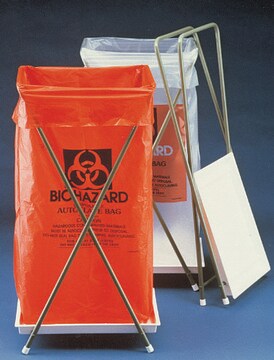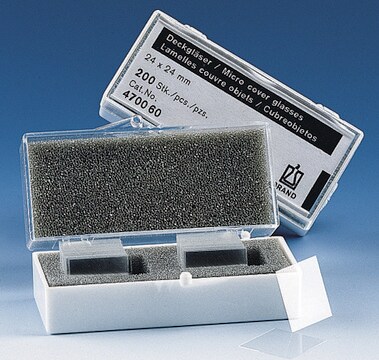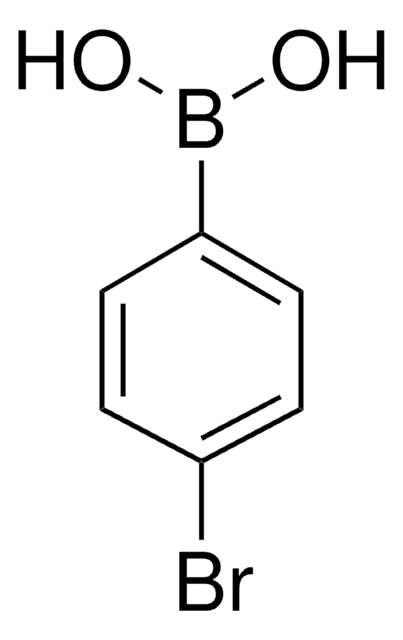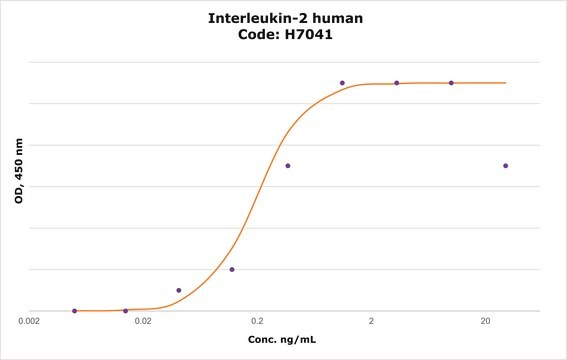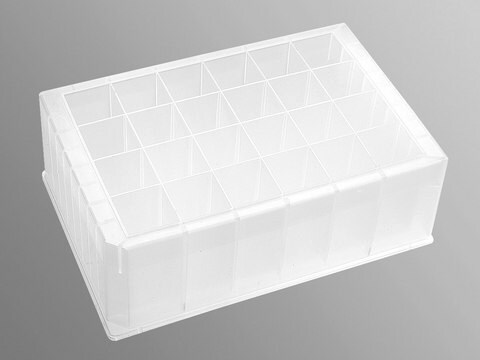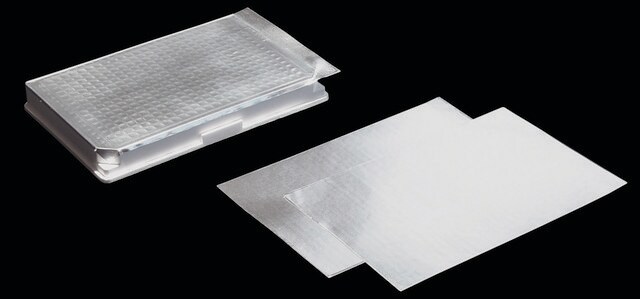추천 제품
생물학적 소스
human peripheral blood
양식
solid
포장
pkg of 10,000,000 cells (HMNC-PB)
제조업체/상표
Cell Applications, Inc
성장 모드
Suspension
핵형
2n = 46
형태학
mononuclear
기술
cell culture | mammalian: suitable
관련 질환(들)
acquired immunodeficiency syndrome/human immunodeficiency virus (AIDS/HIV); infectious diseases; autoimmune diseases
배송 상태
dry ice
저장 온도
−196°C
일반 설명
Lot specific orders are not able to be placed through the web. Contact your local sales rep for more details.
The leukocytes can be divided into two groups: mononuclear and granulocytic cells. The mononuclear cells mainly consist of lymphocytes and monocytes. The lymphocyte population consists of T cells (CD4 and CD8 positive ~75%), B cells and NK cells (~25% combined). In contrast to the granulocytes, these cells have rounded nuclei, some with indentations or folds. The mononuclear cells are involved in various ways with the body′s defense mechanisms.
1. These cells are critical components in the immune system to fight bacterial, viral infections, and function as immune surveillance network to kill tumor cells. The mononuclear cells also secrete a great variety of cytokines to regulate immune response as well as inflammation. Moreover, it has been demonstrated that the mononuclear cells may mediate various biological effects on other tissue and organs. For example, the chemokines produced by monocytes can act on adipocytes and muscles. Human Mononuclear Cells (HMNC) are often extracted from from bone marrow (BM) or peripheral blood (PB) using Ficoll-Hypaque density gradient centrifugation, a hydrophilic polysaccharide that separates layers of blood, with mononuclear cells forming a buffy coat under a layer of plasma. Generally, this buffy coat mainly contains lymphocytes and monocytes, other cell types such as cells are detected in Human Mononuclear Cell (HMNC) preparation.
2. Human Mononuclear Cells (HMNC) are widely used in research and clinical applications every day. The HMNCs are important tool for various studies in the fields of immunology (including auto-immune disorders), infectious disease, hematological malignancies, vaccine development, transplant immunology, and high-throughput screening.
3. HIV research uses them because PBMCs include CD4+ cells, which are the cells HIV infects.
4. Moreover, HMNCs have been accepted as a unique material for cancer immunotheurapy using dendritic cells or activated lymphocytes as an alternative or adjuvant to conventional therapies such as surgery, chemotherapy and radiation treatment.
5,6. Endothelial progenitor cells derived from HMNC have been used in neovascularization to improve limb ischemia
7. In cell therapy to repair ischemic and infracted myocardium.
8. Human Mononuclear Cells (HMNC) should provide a useful tool for studying various aspects of pathology and biology of the human mononuclear cells in vitro.
Human Mononuclear Cells (HMNC) are derived from human peripheral blood (HMNC-PB) using Ficoll-Hypaque density gradient centrifugation. They are cryopreserved immediately after isolation.
1. Allison, A.C. et al, Annu. Rev. Immunol. 1:361 (1983); 2. Sales, V.L. et al, Tissue Eng. 13:525 (2007); 3. Juranic, Z. et al, J. Exp. Clin. Cancer Res. 18:317 (1999); 4. Vicenzi E. et al, J. Leukoc. Biol. 68:405 (2000); 5. Steinman, R. M. et al, Int. J. Cancer 94:459 (2001); 6. Schuler, G., Cancer Immunity 3 (Suppl 1):23 (2003); 7. Kalka, C. et al, Proc. Natl. Acad. Sci. USA 97:3422 (2000); 8. Masuda, H. et al, Cardiovasc. Res. 58:390 (2003)
The leukocytes can be divided into two groups: mononuclear and granulocytic cells. The mononuclear cells mainly consist of lymphocytes and monocytes. The lymphocyte population consists of T cells (CD4 and CD8 positive ~75%), B cells and NK cells (~25% combined). In contrast to the granulocytes, these cells have rounded nuclei, some with indentations or folds. The mononuclear cells are involved in various ways with the body′s defense mechanisms.
1. These cells are critical components in the immune system to fight bacterial, viral infections, and function as immune surveillance network to kill tumor cells. The mononuclear cells also secrete a great variety of cytokines to regulate immune response as well as inflammation. Moreover, it has been demonstrated that the mononuclear cells may mediate various biological effects on other tissue and organs. For example, the chemokines produced by monocytes can act on adipocytes and muscles. Human Mononuclear Cells (HMNC) are often extracted from from bone marrow (BM) or peripheral blood (PB) using Ficoll-Hypaque density gradient centrifugation, a hydrophilic polysaccharide that separates layers of blood, with mononuclear cells forming a buffy coat under a layer of plasma. Generally, this buffy coat mainly contains lymphocytes and monocytes, other cell types such as cells are detected in Human Mononuclear Cell (HMNC) preparation.
2. Human Mononuclear Cells (HMNC) are widely used in research and clinical applications every day. The HMNCs are important tool for various studies in the fields of immunology (including auto-immune disorders), infectious disease, hematological malignancies, vaccine development, transplant immunology, and high-throughput screening.
3. HIV research uses them because PBMCs include CD4+ cells, which are the cells HIV infects.
4. Moreover, HMNCs have been accepted as a unique material for cancer immunotheurapy using dendritic cells or activated lymphocytes as an alternative or adjuvant to conventional therapies such as surgery, chemotherapy and radiation treatment.
5,6. Endothelial progenitor cells derived from HMNC have been used in neovascularization to improve limb ischemia
7. In cell therapy to repair ischemic and infracted myocardium.
8. Human Mononuclear Cells (HMNC) should provide a useful tool for studying various aspects of pathology and biology of the human mononuclear cells in vitro.
Human Mononuclear Cells (HMNC) are derived from human peripheral blood (HMNC-PB) using Ficoll-Hypaque density gradient centrifugation. They are cryopreserved immediately after isolation.
1. Allison, A.C. et al, Annu. Rev. Immunol. 1:361 (1983); 2. Sales, V.L. et al, Tissue Eng. 13:525 (2007); 3. Juranic, Z. et al, J. Exp. Clin. Cancer Res. 18:317 (1999); 4. Vicenzi E. et al, J. Leukoc. Biol. 68:405 (2000); 5. Steinman, R. M. et al, Int. J. Cancer 94:459 (2001); 6. Schuler, G., Cancer Immunity 3 (Suppl 1):23 (2003); 7. Kalka, C. et al, Proc. Natl. Acad. Sci. USA 97:3422 (2000); 8. Masuda, H. et al, Cardiovasc. Res. 58:390 (2003)
세포주 기원
Human Peripheral Blood
애플리케이션
immune surveillance and defense, cytokine and chemokine production, immunoregulation, research, clinical applications, vaccine development, transplant immunology, high-throughput screening, HIV research, cancer immunotherapy, infection fighting, study of T, B and NK cells,
성분
HMNC-PB in DMEM containing 45% FBS & 10% DMSO
제조 메모
- Immediately after isolation, 10,000,000 HMNC-PB in DMEM containing 45% FBS & 10% DMSO
- Blood cells do not proliferate in culture
계대배양 정규 작업
Please refer to the HMNC-PB Culture Protocol.
면책조항
RESEARCH USE ONLY. This product is regulated in France when intended to be used for scientific purposes, including for import and export activities (Article L 1211-1 paragraph 2 of the Public Health Code). The purchaser (i.e. enduser) is required to obtain an import authorization from the France Ministry of Research referred in the Article L1245-5-1 II. of Public Health Code. By ordering this product, you are confirming that you have obtained the proper import authorization.
Storage Class Code
11 - Combustible Solids
WGK
WGK 3
Flash Point (°F)
Not applicable
Flash Point (°C)
Not applicable
가장 최신 버전 중 하나를 선택하세요:
Nilesh P Gawas et al.
Oncology reports, 41(4), 2289-2298 (2019-03-01)
Oral squamous cell carcinoma (OSCC) is a leading cause of mortality in India owing to the high percentage of tobacco chewers, smokers and alcohol consumption. OSCC is highly heterogeneous in nature; therefore poses a challenge in the treatment of the
Nilesh P Gawas et al.
Oncology reports, 41(4), 2289-2298 (2019-03-01)
Oral squamous cell carcinoma (OSCC) is a leading cause of mortality in India owing to the high percentage of tobacco chewers, smokers and alcohol consumption. OSCC is highly heterogeneous in nature; therefore poses a challenge in the treatment of the
프로토콜
Technical information for working with human mononuclear cells – periphery blood including thawing, subculturing and cryopreservation
Global Trade Item Number
| SKU | GTIN |
|---|---|
| 690PB-100A | 4061832765235 |
자사의 과학자팀은 생명 과학, 재료 과학, 화학 합성, 크로마토그래피, 분석 및 기타 많은 영역을 포함한 모든 과학 분야에 경험이 있습니다..
고객지원팀으로 연락바랍니다.

